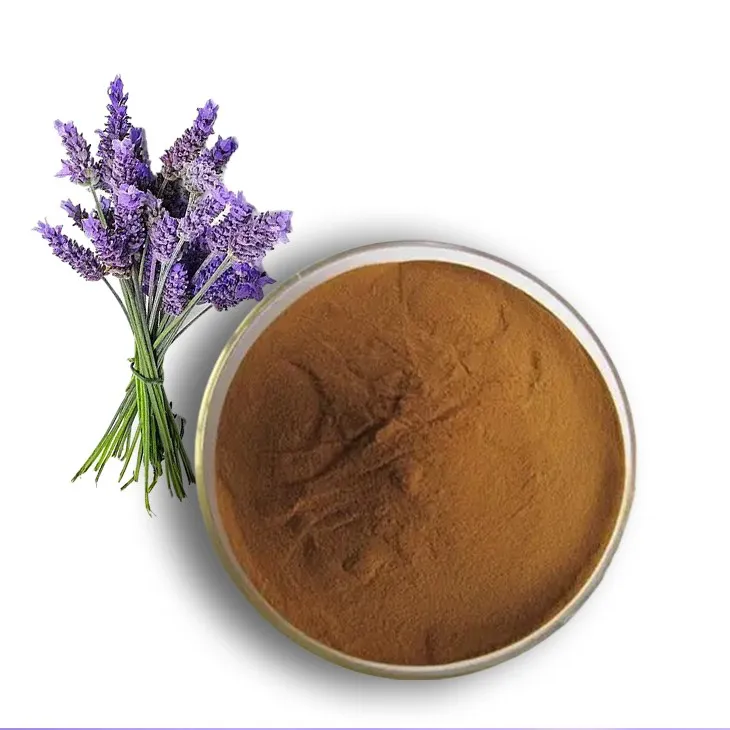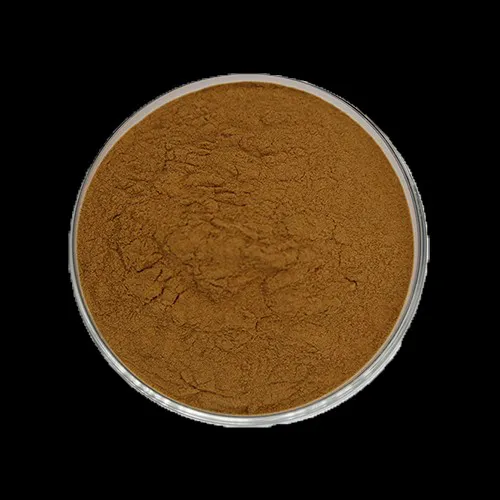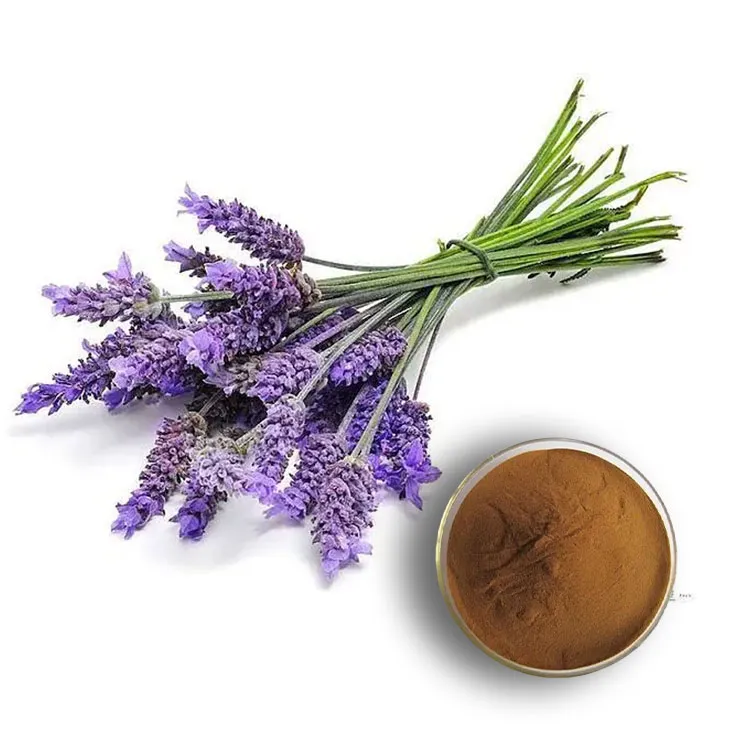- 0086-571-85302990
- sales@greenskybio.com
Best Types of Lavender Extract: A Guide to Selecting the Finest Lavender Extract
2024-11-12

Introduction
Lavender Extract has been cherished for centuries for its numerous benefits, including its calming aroma, potential skincare properties, and use in aromatherapy. However, not all Lavender Extracts are created equal. There are different types, such as absolutes and hydrosols, each with their own characteristics. Additionally, factors like origin, purity, and price can greatly influence the quality and desirability of the extract. In this article, we will explore these aspects in detail to help you make an informed choice when selecting Lavender Extract.

Types of Lavender Extract
1. Lavender Absolute
Lavender absolute is a highly concentrated form of lavender extract. It is obtained through a solvent extraction process, typically using solvents like hexane or ethanol. This method allows for the extraction of a wide range of the plant's aromatic and beneficial compounds.
One of the main characteristics of lavender absolute is its intense aroma. It has a rich, deep scent that is often described as more complex than other forms of lavender extract. This makes it a popular choice in the perfume industry, where it can add a long - lasting and sophisticated lavender note to fragrances.
In terms of its chemical composition, lavender absolute contains a high concentration of esters, which are responsible for its characteristic sweet and floral smell. It also contains other compounds such as alcohols and ketones, which contribute to its overall aroma and potential therapeutic properties.
2. Lavender Hydrosol
Lavender hydrosol, also known as lavender water, is a by - product of the steam distillation process used to produce lavender essential oil. During steam distillation, the plant material is heated with steam, and the volatile oils are carried away with the steam. When the steam is condensed, the essential oil separates from the water, which is the hydrosol.
The aroma of lavender hydrosol is lighter and more delicate compared to the absolute. It has a fresh, floral scent that is closer to the natural smell of the lavender plant in the field. This makes it a great option for those who prefer a more subtle lavender fragrance.
Lavender hydrosol contains not only some of the volatile oils present in the essential oil but also water - soluble compounds that are not extracted in the essential oil production. These include flavonoids and other plant - derived substances, which may have additional health benefits.

Origin of Lavender
The origin of the lavender used to produce the extract can have a significant impact on its quality. Different regions around the world are known for growing lavender, and each region's climate, soil, and growing conditions can influence the plant's chemical composition.
1. French Lavender
France is renowned for its lavender production, particularly in regions such as Provence. French lavender is often associated with high quality. The climate in Provence, with its warm, sunny days and cool nights, along with the well - drained soil, contributes to the production of lavender with a distinct and desirable aroma.
The lavender grown in France typically has a high concentration of essential oils, which can result in a more potent and aromatic extract. This makes French - sourced lavender extract a popular choice among those who seek a premium product for use in high - end perfumes, skincare, or aromatherapy.
2. English Lavender
English lavender (Lavandula angustifolia) is also highly regarded. The cooler climate in England gives the lavender a somewhat different chemical profile compared to French lavender. English lavender is known for its sweet, soft aroma, which is often considered more refined.
It is also well - suited for certain applications such as in traditional English - style skincare products, where its gentle scent and potential soothing properties are highly valued. The plants are often grown in well - tended gardens, and the careful cultivation can contribute to the quality of the resulting extract.
3. Bulgarian Lavender
Bulgaria has a long history of lavender cultivation. Bulgarian lavender is known for its large - scale production and relatively affordable price in some cases. The Bulgarian climate, with its sunny summers and fertile soil, allows for the growth of high - quality lavender.
The lavender from Bulgaria often has a strong, yet pleasant aroma. It is widely used in the production of essential oils and extracts, both for domestic use and for export. Bulgarian lavender extract can be a great option for those who are looking for a good - quality product at a more reasonable cost.

Purity of Lavender Extract
The purity of lavender extract is a crucial factor to consider. A pure extract will contain a high concentration of the desired lavender compounds and will be free from contaminants or adulterants.
1. Testing for Purity
Reputable suppliers of lavender extract will often conduct various tests to ensure purity. These may include gas chromatography - mass spectrometry (GC - MS) analysis, which can identify the individual chemical components in the extract. By comparing the results to known standards for pure lavender extract, any impurities or deviations can be detected.
Another test that may be used is infrared spectroscopy, which can provide information about the functional groups present in the extract. This can help in determining if there are any unexpected substances in the extract that could indicate adulteration.
2. Importance of Pure Extract
Using a pure lavender extract is important for several reasons. In skincare applications, impurities could potentially cause skin irritation or allergic reactions. In aromatherapy, a pure extract will provide the true and intended therapeutic benefits associated with lavender, such as relaxation and stress reduction.
For those using lavender extract in the production of perfumes or other scented products, purity is essential to ensure a consistent and high - quality fragrance. A contaminated or adulterated extract could lead to an off - note in the final product.
Price Considerations
Price is an important factor when choosing lavender extract, but it should not be the only consideration. Understanding the relationship between price and quality can help you make a more cost - effective decision.
1. Factors Affecting Price
The type of extract, such as absolute or hydrosol, can significantly affect the price. Lavender absolutes are generally more expensive due to the more complex extraction process and the higher concentration of aromatic compounds. Hydrosols, being a by - product, are usually more affordable.
The origin of the lavender also plays a role in price. Lavender from regions known for high - quality production, such as France, may be more expensive compared to lavender from regions with lower production costs, like Bulgaria. Additionally, the purity of the extract can impact price, with purer extracts often commanding a higher price due to the additional testing and quality control involved.
2. Balancing Price and Quality
When considering price, it is important to balance it with the quality you require. If you are using lavender extract for personal use in aromatherapy or skincare at home, a more affordable option like a Bulgarian - sourced hydrosol may be sufficient. However, if you are a professional in the perfume or high - end skincare industry, investing in a higher - quality, more expensive French lavender absolute may be necessary to achieve the desired results.
Conclusion
Selecting the best type of lavender extract requires careful consideration of several factors. Understanding the differences between types such as absolutes and hydrosols, the origin of the lavender, the purity of the extract, and the price are all essential in making an informed choice.
Whether you are using lavender extract for its relaxing aroma in aromatherapy, its potential skincare benefits, or in the creation of fragrances, taking the time to research and evaluate these factors will ensure that you get the finest lavender extract for your needs.
FAQ:
What are the main types of lavender extract?
The main types of lavender extract include absolutes and hydrosols. Lavender absolute is a highly concentrated form, often obtained through solvent extraction. It has a rich and intense aroma. Lavender hydrosol, on the other hand, is a by - product of the steam distillation process used to make essential oils. It has a more delicate scent and contains water - soluble components of the lavender plant.
How does the origin of lavender affect the quality of its extract?
The origin of lavender can significantly impact the quality of its extract. Different regions have varying soil conditions, climates, and altitudes. For example, lavender grown in Provence in France is well - known for its high - quality extracts. The soil in this region may be rich in certain minerals that contribute to the plant's growth and the formation of its aromatic compounds. The climate, with appropriate sunlight and rainfall, also affects the chemical composition of the lavender. Lavender from regions with harsher climates or poor soil may produce extracts with less - desirable qualities.
What role does purity play in choosing lavender extract?
Purity is crucial when choosing lavender extract. High - purity extracts are free from contaminants such as pesticides, heavy metals, and other impurities. Pure lavender extract ensures that you are getting the true benefits and aroma of the lavender plant. Impurities can not only affect the quality of the extract but may also have potential health risks if used in products like cosmetics or aromatherapy. In the case of lavender absolutes, a pure product will have a more accurate and intense lavender fragrance, while pure hydrosols will have a cleaner, more natural scent.
How can one determine the purity of lavender extract?
To determine the purity of lavender extract, several methods can be used. One can look for certifications from reliable organizations. For example, organic certifications can indicate that the lavender was grown without the use of harmful pesticides and fertilizers, which is an indication of a relatively pure product. Laboratory testing can also be done to check for the presence of contaminants. Analyzing the chemical composition of the extract can help identify if it contains the expected compounds of lavender and if there are any foreign substances. Additionally, the reputation of the manufacturer and their production processes can give an idea about the purity of the extract. If a manufacturer has a history of strict quality control and transparency in their production, it is more likely that their lavender extract is pure.
Why is price an important factor in selecting lavender extract?
Price is an important factor in selecting lavender extract for several reasons. Higher - quality lavender extracts, such as those from specific regions known for their excellent lavender production or those with a high level of purity, tend to be more expensive. The cost of production, including factors like the quality of the raw materials, the extraction process, and quality control, is reflected in the price. However, a very low - price extract may be of inferior quality, perhaps containing lower - grade lavender or having impurities. It's important to find a balance between price and quality. While a higher - priced extract may offer better quality, it's also necessary to ensure that you are not overpaying for a product. Comparing prices across different brands and products, while considering their origin, purity, and other factors, can help in making an informed decision.
Related literature
- The Chemistry and Therapeutic Properties of Lavender Extracts"
- "Lavender: From Field to Extract - Quality Control and Assurance"
- "Regional Variations in Lavender Extract Composition and Quality"
- ▶ Hesperidin
- ▶ citrus bioflavonoids
- ▶ plant extract
- ▶ lycopene
- ▶ Diosmin
- ▶ Grape seed extract
- ▶ Sea buckthorn Juice Powder
- ▶ Beetroot powder
- ▶ Hops Extract
- ▶ Artichoke Extract
- ▶ Reishi mushroom extract
- ▶ Astaxanthin
- ▶ Green Tea Extract
- ▶ Curcumin Extract
- ▶ Horse Chestnut Extract
- ▶ Other Problems
- ▶ Boswellia Serrata Extract
- ▶ Resveratrol Extract
- ▶ Marigold Extract
- ▶ Grape Leaf Extract
- ▶ blog3
-
High purity olive leaf extract
2024-11-12
-
Lavender oil extraction method
2024-11-12
-
100% organic virgin sea buckthorn fruit oil
2024-11-12
-
Lotus leaf extract powder factory in China
2024-11-12
-
China aged garlic extract supplier
2024-11-12
-
Deer antler extract powder manufacturer
2024-11-12
-
Saw palmetto extract vs whole herb
2024-11-12
-
Stevia Extract
2024-11-12
-
Pine bark Extract Powder
2024-11-12
-
Red Wine Extract
2024-11-12
-
Konjac Powder
2024-11-12
-
Okra Extract
2024-11-12
-
Eucommia Ulmoides Extract
2024-11-12
-
Selenium yeast
2024-11-12
-
Tongkat Ali Extract
2024-11-12
-
White Willow Bark Extract
2024-11-12
-
Diosmin
2024-11-12





















